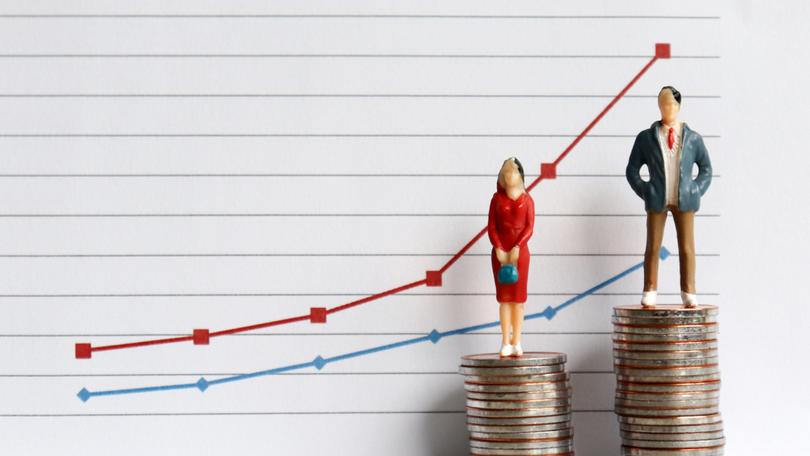Bill Shorten: The gender pay gap makes us all worse off

There is a meme that says the gender pay gap isn’t real. That men tend to go for higher paying jobs like doctor, engineer and CEO, whereas women tend to go for lower paying jobs like female doctor, female engineer and female CEO.
While that might be intended to be funny, the reality behind the joke is far from amusing.
Women make up 50 per cent of the world’s population and yet, even in these supposedly enlightened times, they still struggle for equality in too many aspects of their lives.
Sign up to The Nightly's newsletters.
Get the first look at the digital newspaper, curated daily stories and breaking headlines delivered to your inbox.
By continuing you agree to our Terms and Privacy Policy.That was laid out in black and white last week when the Workplace Gender Equality Agency published gender pay gaps for nearly 5000 Australian private sector employers.
This is the first time we’ve peeked behind the curtain and seen what we long suspected.
The Minister for Women, Senator Katy Gallagher, called the release of the data “a pivotal moment” for gender equality in Australia and a “historic step” towards transparency and accountability.
What it must also be is a wake-up call to employers, employees and the broader community.
But let’s take a moment to clarify what the gender pay gap is, because there is a bit of misinformation out there.
It is not men and women getting paid a different salary for doing the same job. That is unequal pay. Equal pay for the same role has been a legal requirement in Australia since 1969.
The gender pay gap is the difference in earning capacity between a man and a woman over their careers.
The pay gap is in favour of men in every industry, even those that predominantly employ women.
According to the WGEA data, that gap for Australia is now 19 per cent. This means the median pay for a woman in WGEA’s dataset is 19 per cent less than the median pay for a man.[i]
That doesn’t sound fair, you may say.
It’s not.
It happens because men rise to positions of power and therefore are paid considerably more than the women who are still looking up at that glass ceiling.
You might think I am facetious picking up this topic. I am a man with power. But I am also currently the direct employer of 10 women, each one as dynamic as the next.
I am a husband, and father to two extraordinary young women. I have many friends and colleagues who I want to succeed. Always have. And I also represent tens of thousands of women in my electorate of Maribyrnong.
But this is not just about women. No person wants to experience discrimination.
When I was opposition leader, I said that Labor had to strive for better.
So, I put a resolution to our 2015 national conference that we commit to the goal of 50-50 equal gender representation across parliaments, by 2025.
This was the result of a long running campaign and sheer hard work by Labor women. So it is with great pride — and thanks to these amazing women — that I see the fruits of that initiative today. The 2022 election was the first time in Australian history a majority woman government was elected Federally.
If employers can identify obstacles to particular groups of women being promoted, they can develop specific approaches to address these gaps.
Labor can boast that in the 47th Parliament we have in our ranks 53 per cent women. Forty-eight per cent of Labor members in the House, and 69 per cent of Labor senators are women.
And as Government and party we are absolutely committed to embedding women’s economic equality as a core economic imperative of the Albanese Government, supported by record investment in women, children and families and actively working to achieve gender equality.
One of the best examples of the gender pay gap in action is in the big ASX companies. There is no doubt that there are more women on boards of mining companies and banks and airlines than ever before. About one-in-three non-executive directors are women.
But across the 290 ASX300 entities surveyed, only 33 had boards chaired by women and only four had a female chair and CEO.
A study published last year by investor rights analysts Ownership Matters found that there was only one woman among the 15 highest paid professional directors in 2022 who received more than $1 million in fees.
The study concluded that “the men are allowing record numbers of female directors into the tent, but are yet to meaningfully hand over the best paid chairing roles”.
It makes no sense when you consider that research shows increasing the representation of women across each of the key leadership roles in an organisation added market value of between $52m and $70m per year for an average sized organisation.
Those findings are what is called “statistically significant”. That means the association between women in leadership and business performance is causal.
So, women are underrepresented in senior roles, but over-represented in low-paid and insecure work, the unequal distribution of unpaid caring work, and the impact of bias and discrimination.
The thing is the gender pay gap doesn’t just mean financial losses.
The Global Institute for Women’s Leadership, which is fortunate to have former prime minister, and Australia’s only female prime minister, Julia Gillard, as chair, reports the implications of gender pay gaps can correlate to poorer health outcomes for women and children and more women living in poverty in old age.
GIWL’s research paper Bridging the gap? said that when one gender is devalued in the workforce to a much greater extent than the other, we perpetuate an imbalanced society and “miss out on the full impact of what women and men can contribute”.
The negative effects of the gender pay gap compound with factors such as ethnicity, first language, place of birth, and level or type of education.
If employers can identify obstacles to particular groups of women being promoted, they can develop specific approaches to address these gaps.
It has been proven that affirmative action works.
The Albanese Government is proof.
Originally published on The Nightly
